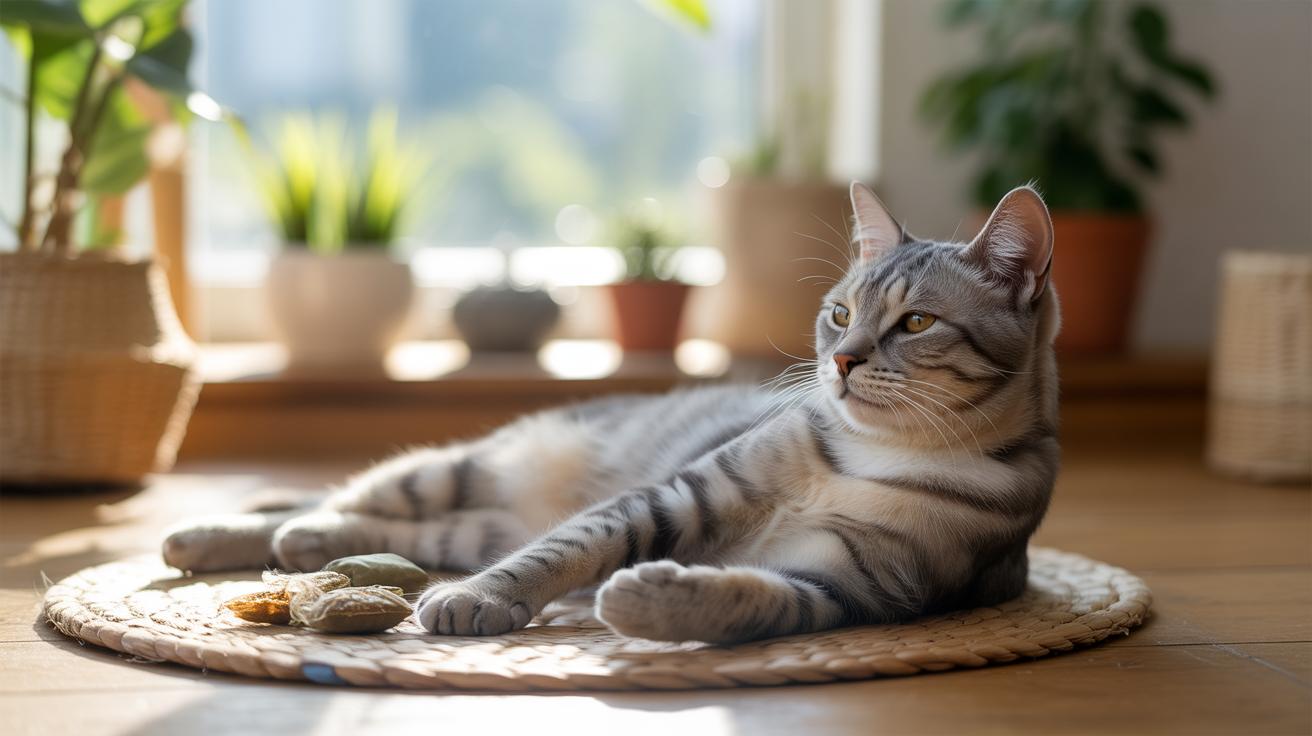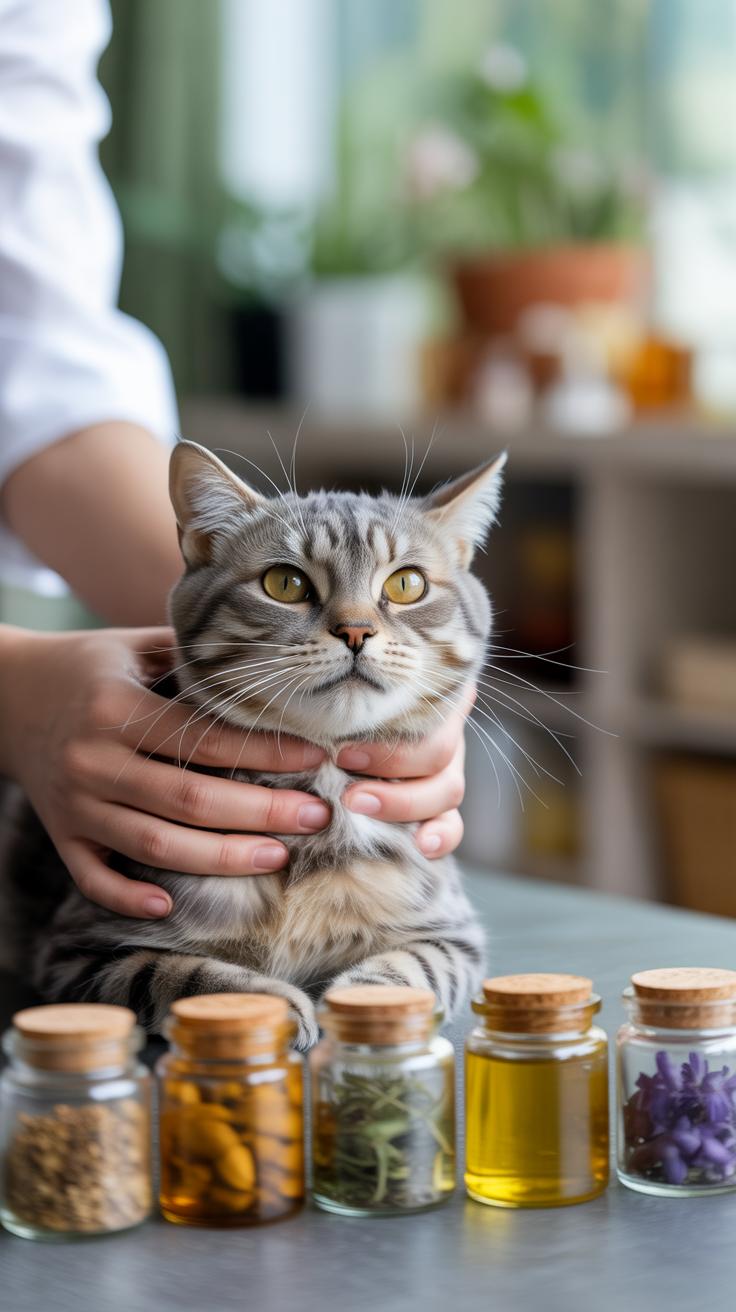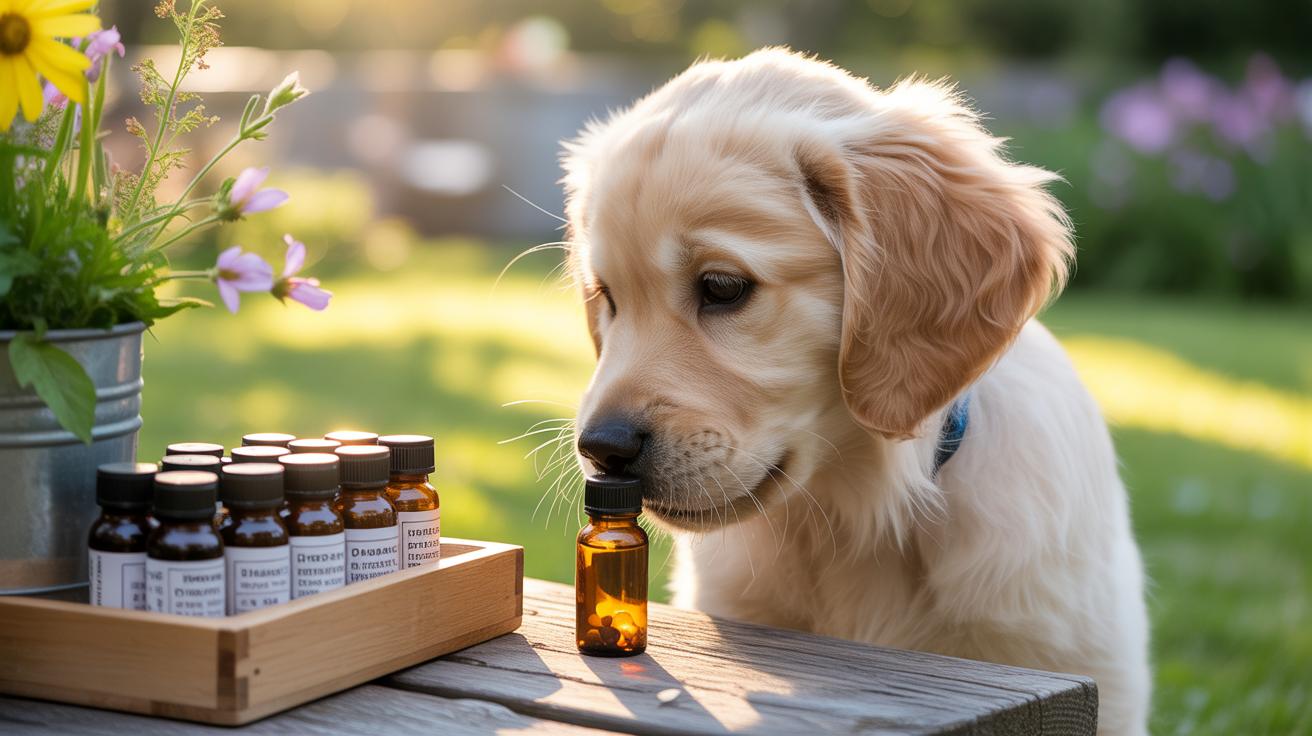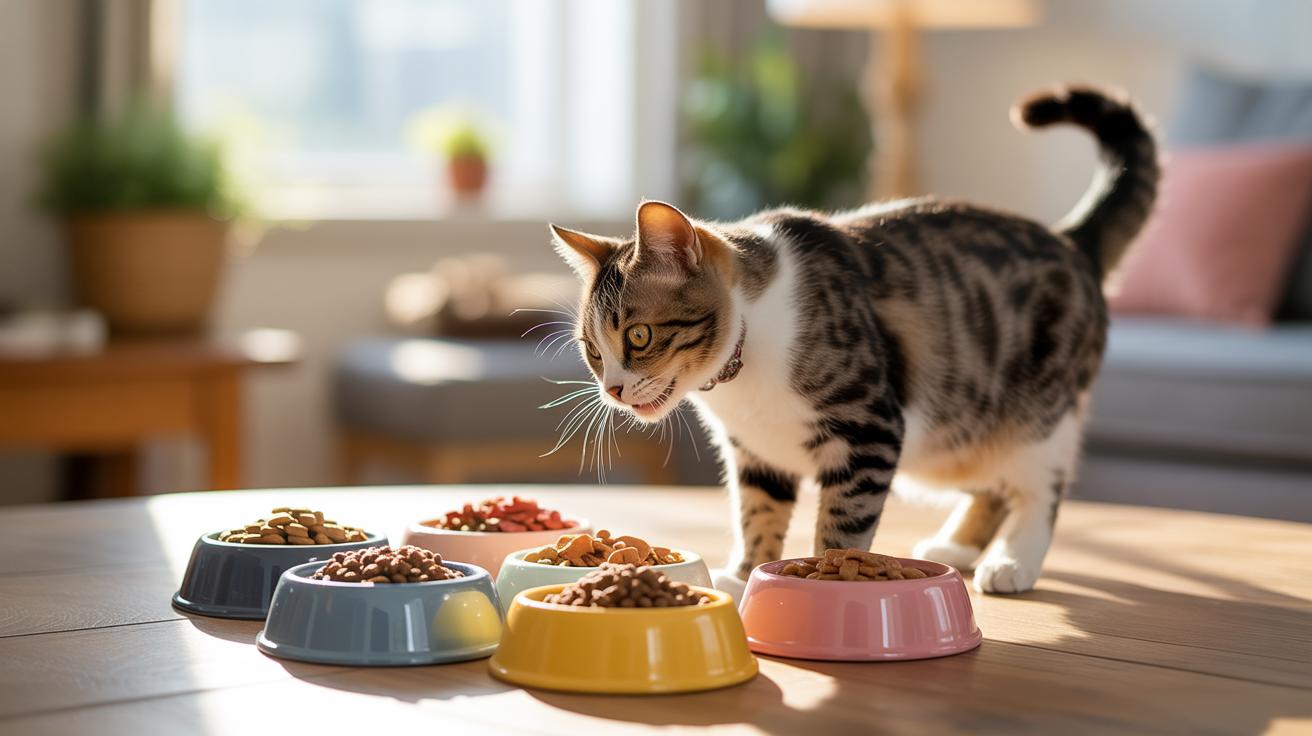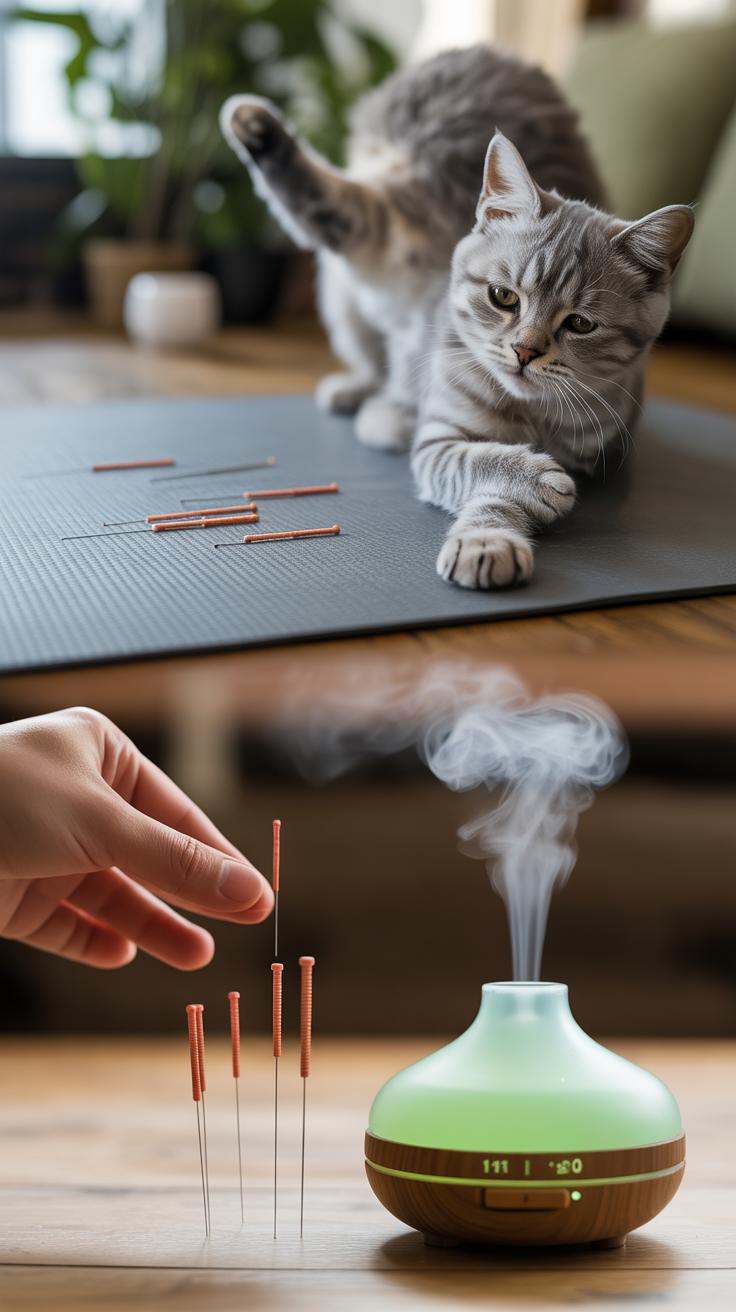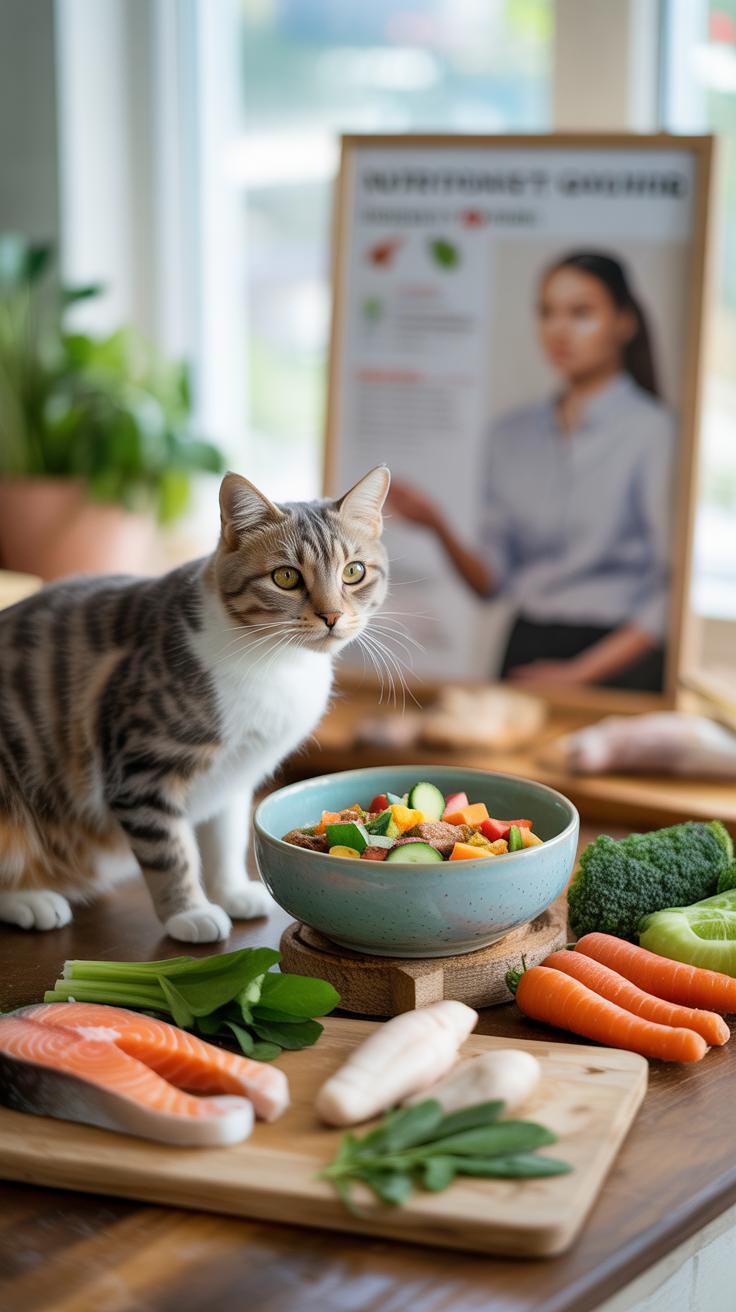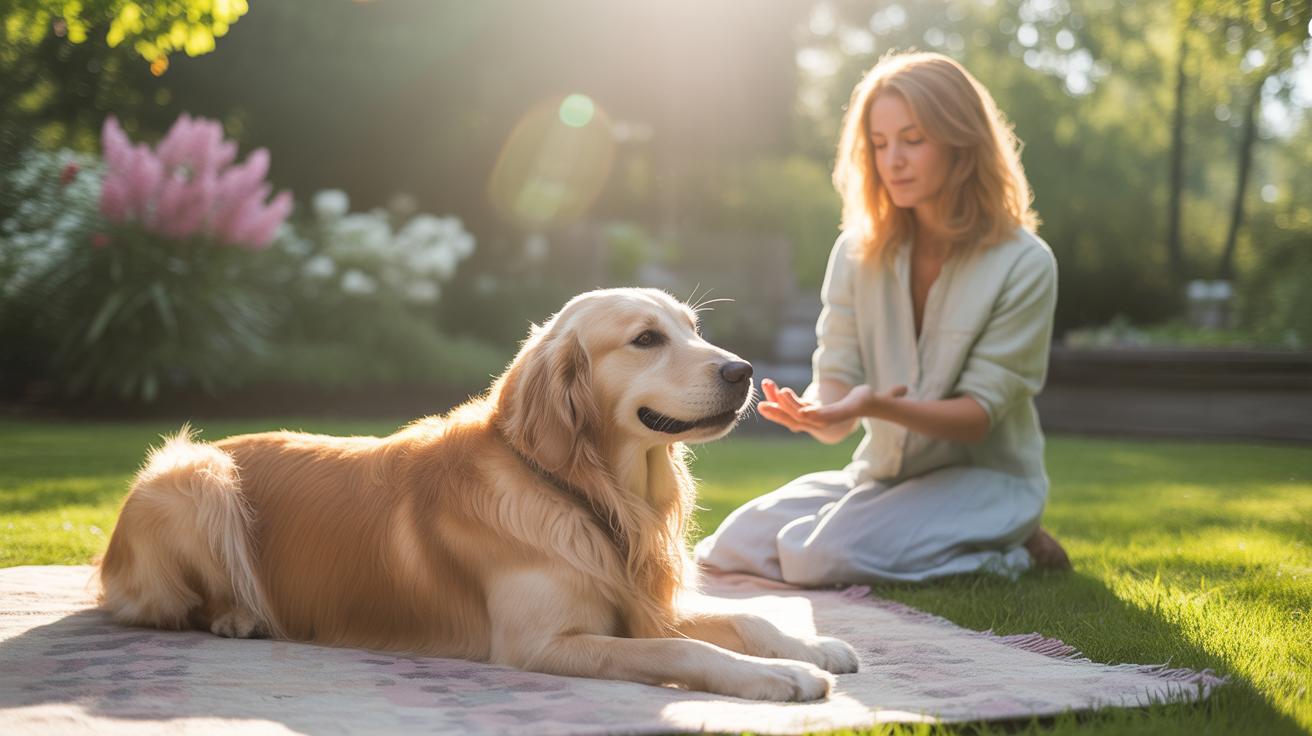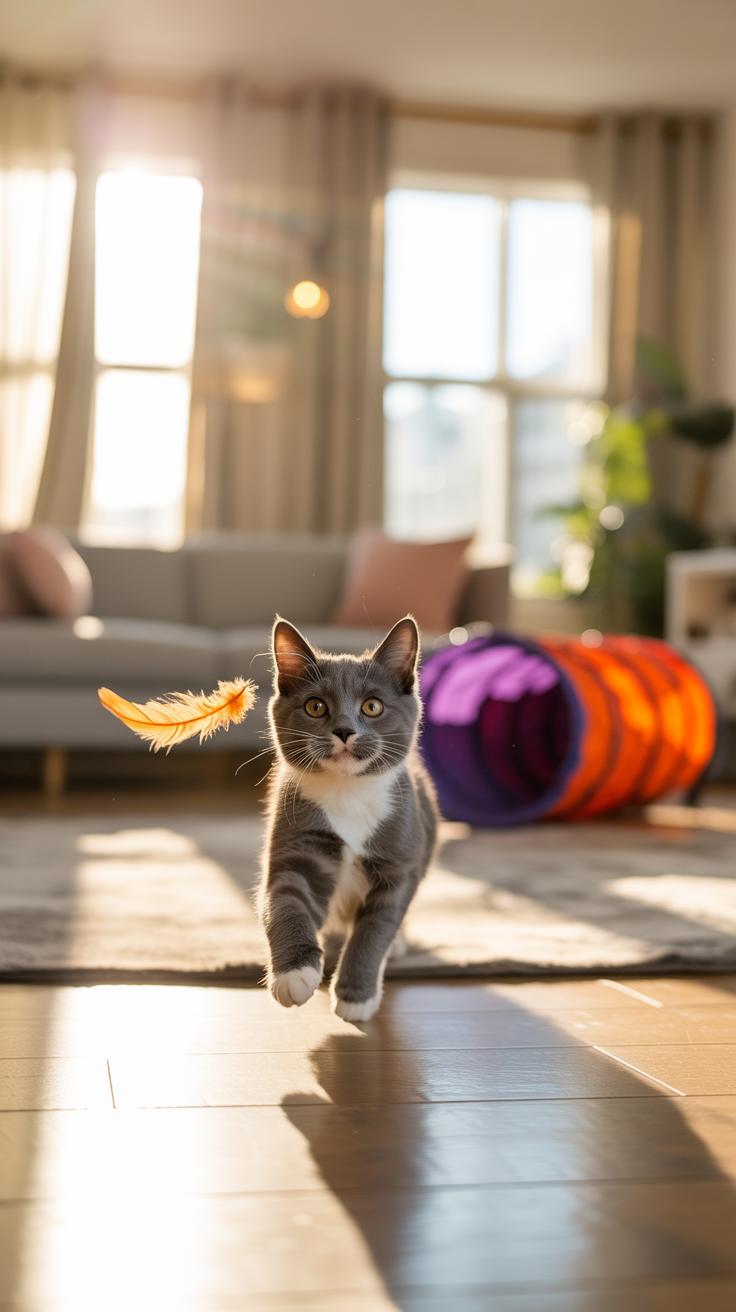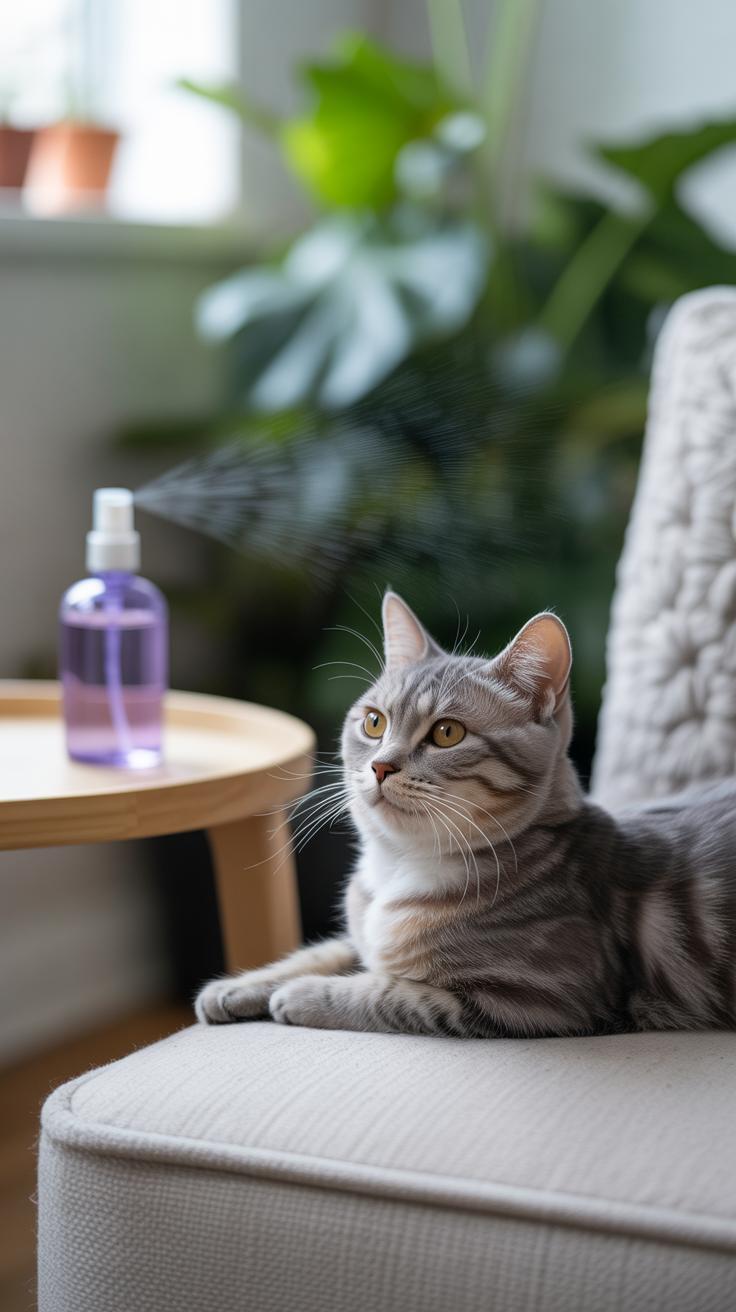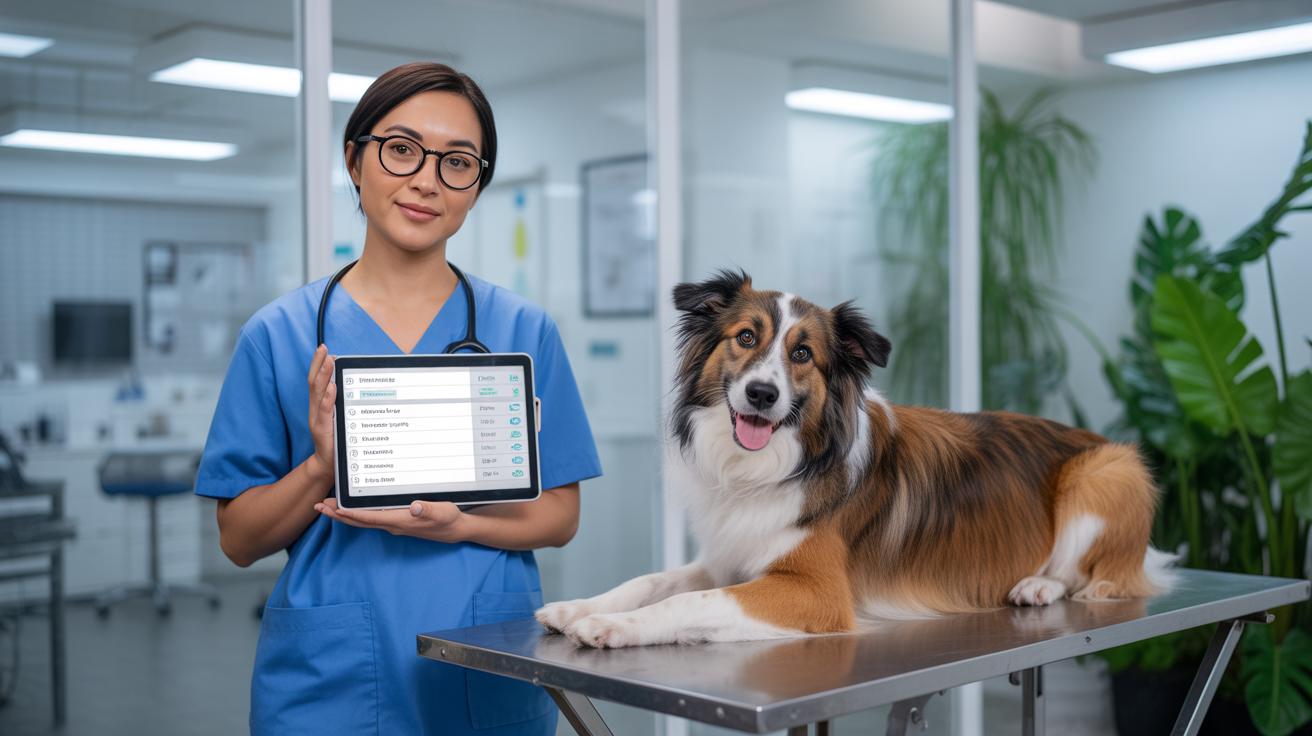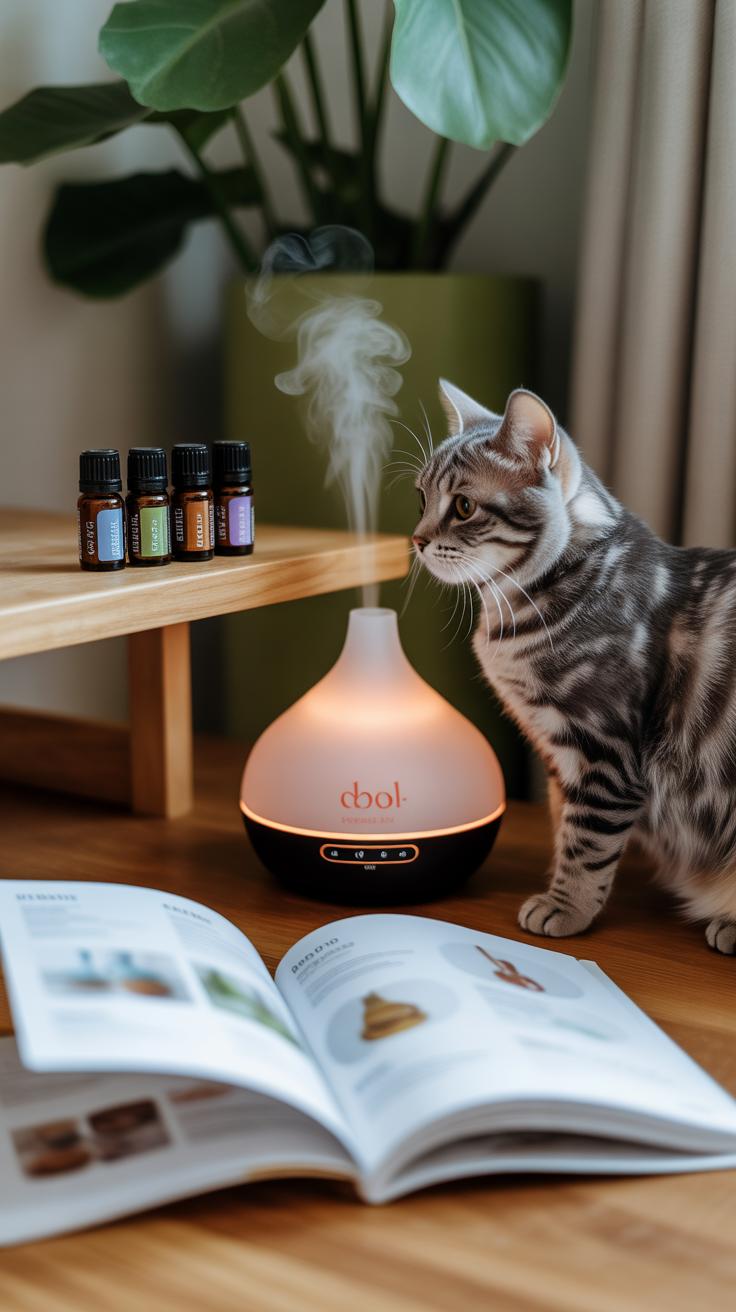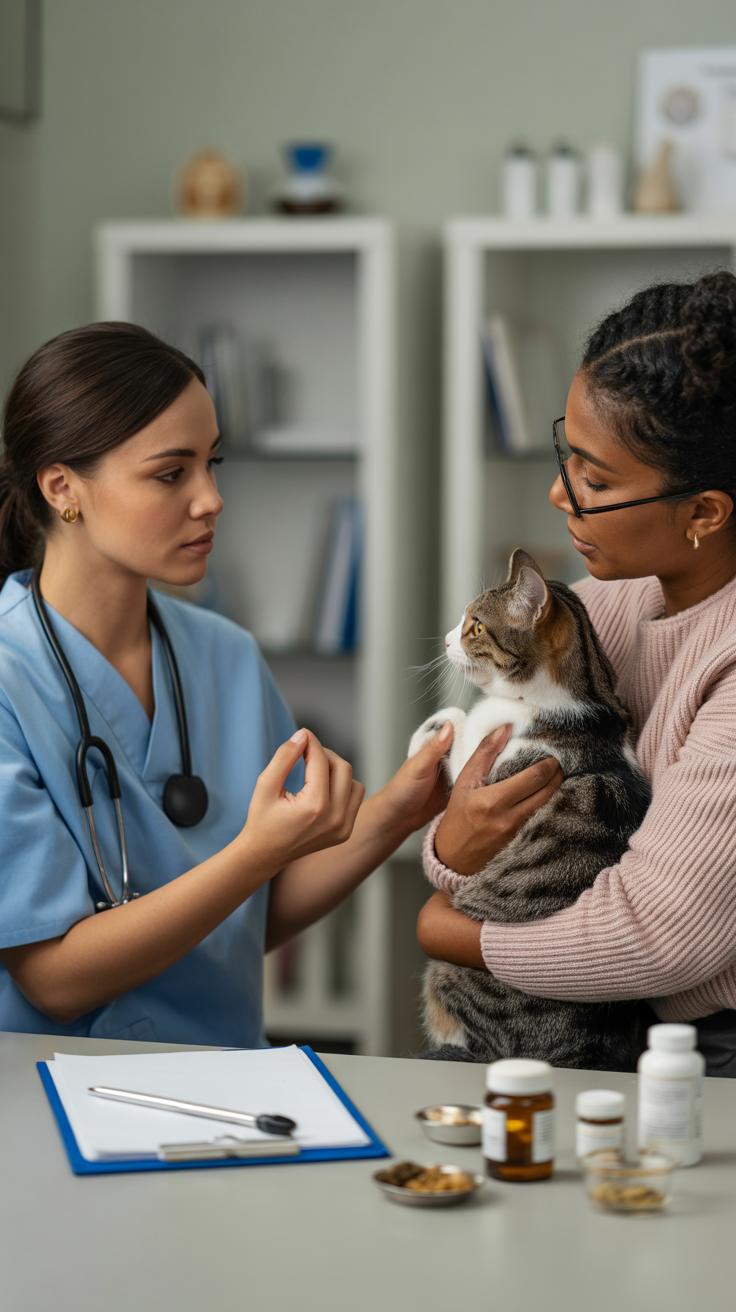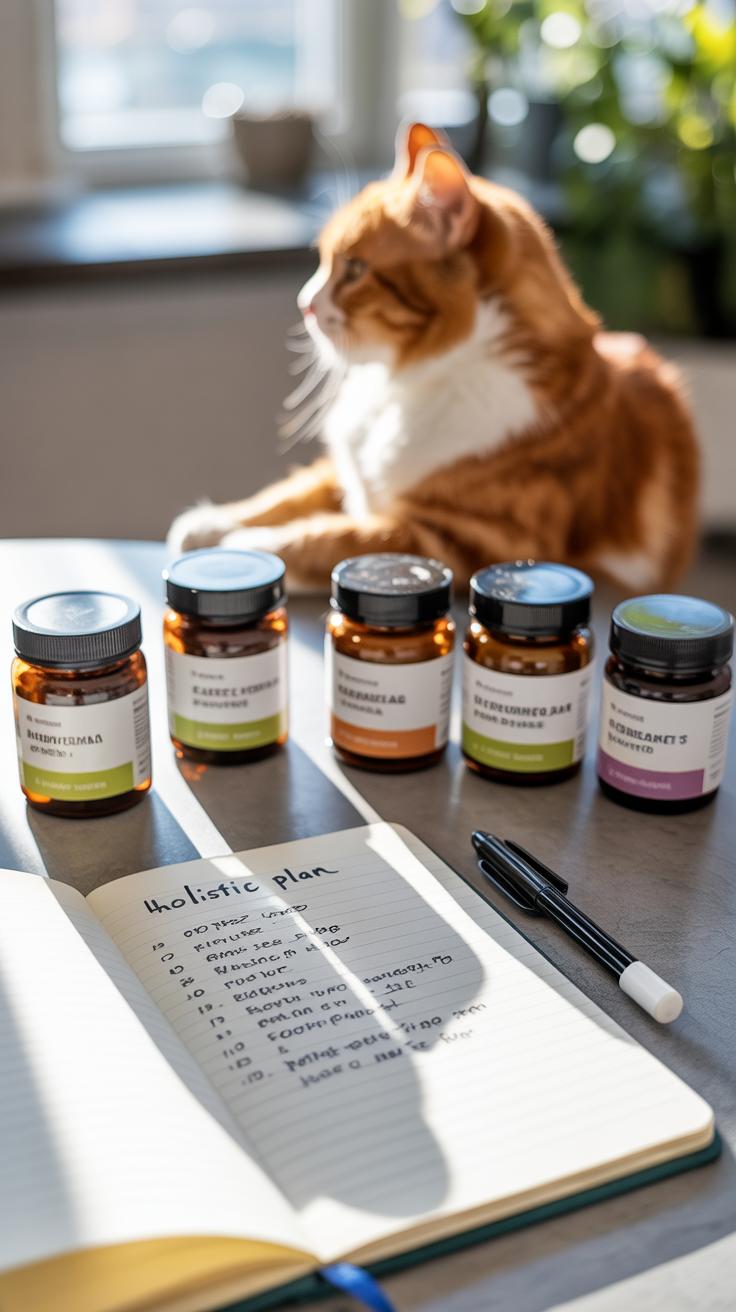Introduction
Holistic healing focuses on treating the whole being, not just symptoms. When applied to pets, this approach helps improve their overall wellbeing by addressing physical, emotional, and environmental factors. This article explores several holistic healing techniques designed to support your pet’s health naturally.
You will learn practical ways to integrate holistic care into your pet’s life. From diet and exercise to alternative therapies, these methods can help you enhance your pet’s health. The following chapters will guide you through understanding holistic healing and how to use it for your pet.
What Holistic Healing Means for Pets
Holistic healing for pets is about seeing the animal as a whole being, not just a collection of symptoms or illnesses. Instead of focusing only on treating a specific injury or disease, it looks at the pet’s physical health, emotional state, and even the environment they live in. This approach tries to balance all these aspects to support lasting wellness rather than quick fixes.
Traditional medicine often zeroes in on a particular problem—like an infection or broken bone—with medication or surgery. Holistic healing takes a broader view. It asks questions like: How is your pet feeling emotionally? Does their environment support their health? Are there underlying stresses contributing to their condition? Paying attention to these can sometimes reveal causes that might be missed with conventional methods.
In practice, this means using a mix of natural therapies, lifestyle adjustments, and sometimes traditional treatments, all working together. I’ve noticed some pet owners, myself included, find this approach feels more personal—more like caring for a family member, not just treating a patient.
The Connection Between Mind and Body in Pets
We tend to underestimate how a pet’s emotions affect their body. But just like humans, pets can experience stress, anxiety, and depression, which can have real impacts on physical health. A worried dog might develop digestive issues. A stressed cat might excessively groom or lose appetite.
Think about your own pet—have you noticed changes in their behavior during loud storms or after a stressful event? These moments aren’t just emotional; they can lead to a weakened immune system or slower healing. Recognizing the link between mental state and physical health is key to supporting your pet’s overall wellbeing.
It might sometimes feel tricky to identify subtle signs, but watching for changes in energy, appetite, or social behavior can offer vital clues. Treating emotional health can, in turn, relieve some physical symptoms without jumping straight to drugs.
How Environment Influences Health
The surroundings where your pet lives shape their health more than you might think. A noisy, chaotic environment can create stress, while a calm, stimulating space can promote relaxation and mental engagement. Temperature, air quality, and even the type of bedding can affect comfort and well-being.
Pets left alone for long periods or confined to tight spaces may develop anxiety or destructive behaviors. On the other hand, those with access to safe outdoor areas or enriching toys tend to be happier and show better physical condition. It’s not just comfort—it’s about the whole picture of health.
Environmental factors might seem small compared to diet or medical care, but they quietly influence your pet’s immune system, mood, and energy levels. Observing and adjusting their environment can sometimes make a surprising difference in how your pet feels day to day.
Common Holistic Healing Techniques for Pets
When it comes to supporting your pet’s health naturally, a few holistic methods often come up. These aren’t about replacing conventional care but supplementing it to address the whole animal—body, mind, and environment.
Herbal Remedies and Supplements
Herbal supplements can quietly support your pet’s wellbeing, if used wisely. For example, milk thistle sometimes helps liver health, while chamomile can calm nervous pets. Still, it’s tricky—right dosage varies, and some herbs might interact with medications. It’s not a one-size-fits-all deal.
Supplements like omega-3 fatty acids also count here, easing inflammation and boosting skin health. I’ve noticed pets respond differently, so observing them closely is key. You might ask: how much should I give? Usually, vets or holistic practitioners guide this carefully.
Physical Therapies Like Massage and Acupuncture
Massage often seems simple, but it can make a real difference. It helps with tension or joint stiffness and can reduce stress. I once tried gentle strokes on a restless dog; after a few sessions, she appeared calmer and more willing to move.
Acupuncture might feel unfamiliar, yet many pets show quicker pain relief and improved mobility. Tiny needles target specific points, encouraging the body’s own healing. It’s subtle work, not an instant fix, but the changes over time can be surprising.
Both massage and acupuncture need a skilled hand. They’re not just pampering but therapeutic aids that might gently unlock your pet’s natural balance.
Nutrition as a Foundation for Holistic Health
Explain the importance of a balanced diet in holistic pet care
A balanced diet forms the core of holistic health for pets. Without it, other healing efforts might fall short or feel incomplete. Pets rely on the nutrients they get from food to maintain immune function, repair tissues, and keep energy levels stable. I’ve seen pets struggle when diets lean too heavily on processed kibble or treats rather than nourishing ingredients. Of course, “balanced” looks different depending on the pet’s age, breed, and existing health conditions, which can make it tricky to pinpoint the right formula. But aiming for well-rounded nutrition is a step in the right direction, supporting both physical vitality and subtle healing processes that might otherwise go unnoticed.
Choosing Whole Foods for Your Pet
Making the switch to whole foods means seeking out meals closer to what your pet might find in nature. This often includes fresh meats, vegetables, and grains without preservatives or fillers. If you’re wondering where to start, here are a few considerations:
- Opt for fresh, minimally processed proteins such as chicken, turkey, or fish.
- Incorporate vegetables like carrots or green beans, which add fiber and antioxidants.
- Include natural sources of fat, like fish oil, which supports coat and joint health.
- Skip ingredients with artificial colors, flavors, or excessive grains that offer little nutritional value.
Choosing foods this way feels a bit more hands-on, maybe even challenging at first. But it often pays off in the form of improved digestion, shinier coats, and brighter eyes. After swapping ingredients, you might notice your pet’s appetite and mood subtly shift—sometimes in surprising ways.
The Role of Hydration in Healing
Water is, well, essential—but its role in healing deserves a closer look. Hydration affects nearly every system in the body, from flushing toxins to regulating temperature and supporting cellular repair. I’ve observed subtle changes when pets don’t drink enough: lethargy, dry skin, slower recovery from minor illnesses. Encouraging your pet to drink can be simple—fresh, clean water available at all times can prompt better intake. Some pets, especially cats, might need a bit more coaxing, like water fountains or wet foods that boost hydration. In day-to-day care, remembering water isn’t just a basic need—it’s a healing tool—can shift how you approach your pet’s wellbeing.
Exercise and Movement for Healing
Regular physical activity plays a crucial role in your pet’s healing journey. Movement encourages circulation, which helps deliver nutrients to tissues and removes toxins. It’s not just about burning energy—exercise can reduce inflammation, support joint health, and even boost the immune system. I sometimes find that when my dog has been a bit sluggish, a simple walk lifts his mood and seems to help him recover faster.
Different pets need different kinds of exercise. For dogs, a mix of walking, gentle running, or swimming works well, depending on their size and breed. Cats tend to benefit from short bursts of play with toys or climbing structures. Small mammals like rabbits or guinea pigs enjoy safe, supervised floor time to hop around. The trick is to match activity to the pet’s physical makeup—and honestly, their personality too.
Tailoring Exercise to Your Pet’s Needs
A young, healthy pet can take on more vigorous exercise, but as they age or if health issues crop up, routines should adjust. I often remind myself to slow down a bit with my older dog—he can’t keep up with those long hikes anymore. Consider shorter, more frequent sessions that won’t strain joints or tire them out. Pets with arthritis or heart conditions may need very gentle movement, like slow walks or water therapy.
It helps to observe how your pet reacts. Do they seem eager for a stroll, or do they prefer a slower pace? Maybe experimenting with different activities can reveal what suits them best. And don’t forget: mental stimulation is part of movement too. Engaging their brain through activity supports holistic healing in ways physical motion alone can’t.
Benefits of Outdoor Activities
Getting outside isn’t just about fresh air—it connects your pet with changing sights, sounds, and scents that can ease stress and spark curiosity. Nature offers a dynamic environment that helps pets stay alert and engaged. My cat, for example, seems calmer and more relaxed after sitting in the sun by the window or gently exploring the garden.
Outdoor time stimulates senses that indoor life often neglects. Even a brief walk among trees or a romp in a grassy patch can lower anxiety and improve mood. It’s interesting to see how pets respond differently: some thrive in quiet nature spots, while others do better in a bustling park. These experiences can encourage a sense of well-being that supports holistic healing—not just physical recovery but emotional balance too.
The Role of Stress Management in Pet Health
Stress can take a real toll on pets, just like it does on us. When your furry friend feels uneasy or overwhelmed, their body reacts in ways that might not be obvious at first. You might notice changes in appetite, sudden aggression, or withdrawal. Sometimes pets pace or pant excessively—signs easily dismissed as just behavior quirks. But these are clues pointing to stress.
Recognizing stress early helps you take steps before health problems start. Watch for:
- Excessive licking or chewing at the skin
- Sudden changes in sleeping or play habits
- Unusual bathroom accidents in house-trained pets
- Avoidance of people or other pets in the household
Reducing stress often means creating a space where your pet feels safe and calm. Low-volume music or nature sounds can help some animals relax. You might set up a cozy corner with familiar blankets and toys for them to retreat to when things get loud or chaotic. It doesn’t have to be fancy—sometimes simply sitting quietly with your pet, speaking softly, and offering gentle petting makes a noticeable difference.
Does your pet respond to any particular routine or comfort? It’s a bit of trial and error. But being mindful of these signs and gentle methods can shift their mood and health over time, easing tension naturally.
Using Essential Oils Safely for Pets
Essential oils can be helpful in easing anxiety, soothing minor skin irritations, or even supporting respiratory health in pets—but they need to be used very carefully. Pets, especially cats and dogs, react differently than humans to these concentrated plant extracts. What might be calming for you could be harmful or overwhelming to your furry friend.
The benefits include relaxation effects, mild pain relief, and even natural antibacterial properties. Yet, the margin between helpful and harmful can be pretty narrow. You should always dilute oils heavily and never apply them directly onto your pet’s skin without guidance. Because pets have more sensitive metabolisms, their livers can struggle to process some compounds found in oils.
Small signs like sneezing, pawing at their noses, or lethargy can suggest oils aren’t sitting well. It’s okay to be cautious. Maybe start with diffusing oils in a well-ventilated room where your pet can move away if they want, rather than applying oils directly. And always consult a vet who understands holistic care before trying anything new.
Which Essential Oils Are Safe for Pets
Some oils tend to be better tolerated than others. For dogs, lavender, chamomile, cedarwood, and frankincense often come up as safer options. These can help with relaxation, skin conditions, or mild anxiety.
- Lavender: calming and may help reduce stress and mild pain.
- Chamomile: soothing for skin issues and calming nervous pets.
- Cedarwood: sometimes used for its insect-repelling qualities.
- Frankincense: supports immune health and reduces inflammation.
Cats are a bit trickier. Oils like lavender can still be used but only with extreme caution. They’re more sensitive to phenols and other components found in many essential oils. Oils such as tea tree, peppermint, eucalyptus, and citrus should be avoided completely—they can be toxic.
Methods of Applying Essential Oils
Applying essential oils safely means choosing indirect and controlled methods. Diffusing oils in a large space is often preferred—your pet can move freely and isn’t forced to inhale concentrated vapors all the time. Keep the sessions short, maybe 15-30 minutes, and watch your pet’s reaction.
Topical use is trickier. Any application to skin requires heavy dilution, typically with a carrier oil like coconut or almond. Even then, spot testing on a small patch is wise before wider use. Never put oils near your pet’s eyes, nose, or mouth.
Some owners find adding diluted drops to a pet’s collar or bedding helpful for subtle effects without overwhelming them. Still, it’s not a one-size-fits-all, and you should always monitor your pet closely for discomfort or changes in behavior.
Combining Holistic Healing with Veterinary Care
Holistic healing doesn’t replace veterinary care; it works alongside it. Think of it like adding another layer of support to your pet’s health. For instance, while a vet might treat an infection with antibiotics, gentle massage or acupuncture could help reduce your pet’s stress and speed recovery. These natural methods often focus on the whole animal—body, mind, and environment—something conventional medicine sometimes misses.
Working with Your Veterinarian
When you want to try holistic methods, start by talking openly with your vet. Some might be skeptical at first, but most appreciate when owners bring thoughtful questions. Share what you’re considering and ask if it’s safe. For example, if you’re thinking about herbal supplements or special diets, your vet can advise on dosage or possible interactions with medications.
Don’t hesitate to ask how the holistic approach could fit with existing treatments. If the vet seems unsure, you could look for one who has experience in integrative medicine. It’s about teamwork, really, with you advocating for your pet.
When to Use Holistic Methods and When to Seek Medical Help
It’s tempting to rely only on holistic methods, especially for minor issues like anxiety or mild arthritis. But there are times when professional medical help is non-negotiable: sudden injuries, severe pain, coughing, seizures—these demand immediate veterinary attention.
Holistic care often suits chronic conditions or general wellbeing, but not emergencies. If your pet’s symptoms worsen or don’t improve after a few days of treatment, don’t hesitate to call your vet. Sometimes holistic therapies work best after a medical diagnosis has clarified what’s going on.
Finding this balance can be tricky. You might wonder if you’re doing enough or if you should stop one approach or the other. The key is staying in close touch with your vet, watching your pet closely, and trusting both nature and science when it’s appropriate.
Creating a Holistic Healing Plan for Your Pet
Building a holistic healing plan for your pet calls for attention to a few key areas. Before anything else, take stock of your pet’s current health – behavior, diet, activity level, and physical condition. This isn’t just about checking off boxes but understanding subtle signs like changes in energy or mood that might point to underlying needs.
Try to answer questions like: Does your pet seem stiff or sluggish? Are there specific stressors in their environment that might affect them? What kind of food seem to agree—or disagree—with their digestion? Jotting down these observations helps paint a clearer picture.
Next, it makes sense to set clear, realistic goals. These could be as simple as improving digestion, reducing anxiety, or increasing overall vitality. Goals don’t have to be fixed; they can shift as you notice progress or setbacks.
To monitor, keep a journal or use an app to track behaviors, appetite, and energy changes. Even little wins are worth noting. Remember, healing isn’t always linear, so patience and flexibility become part of your routine.
When designing the plan, balance matters. Incorporate diet changes that suit your pet’s preferences and health needs. Find an exercise type that sparks some joy rather than stress—short walks, gentle play, or specialized stretches can all fit.
Consider therapies that resonate—acupuncture, massage, or aromatherapy might not suit every pet but are worth exploring cautiously. And don’t underestimate environment’s role: quiet spots, natural light, and safe spaces contribute heavily to wellbeing.
Putting these steps together feels a bit like trial and error, honestly. Your pet’s response will guide what stays or goes. Trust your observations, seek expert advice when unsure, and tweak the plan as you go. It’s not a simple checklist but a growing understanding.
Success Stories of Holistic Healing for Pets
Case Studies of Different Pets
Take Bella, a seven-year-old golden retriever who had chronic skin issues. Her owner tried various creams and medications without much success. Eventually, a holistic approach combining dietary changes, herbal supplements, and regular acupuncture sessions was introduced. Over several months, Bella’s skin improved noticeably. She seemed less itchy and more energetic. It wasn’t an overnight fix, but the steady improvement was hard to ignore.
Then there’s Max, a senior cat with arthritis. Instead of relying only on painkillers, his owner included gentle hydrotherapy and essential oils in his routine. Max became more mobile and playful again, surprising everyone who thought age had slowed him down permanently.
Also, consider Luna, a small terrier with anxiety. Through calming essential oil diffusers, energy work like Reiki, and routine massage, Luna’s stress levels dropped. She settled quicker during thunderstorms and car rides—less frantic, more relaxed. It may seem soft to some, but the progress was clear.
Lessons Learned and Tips for Your Own Pet
● Healing takes time. Be patient—results often come in small steps rather than big leaps.
● Consider mixing therapies. Combining diet, touch, and gentle movement sometimes works better than relying on one.
● Pay attention to your pet’s responses—you’ll learn what helps and what doesn’t.
● Trust your instincts a bit. If a method feels right and your pet seems comfortable, that’s a good sign.
So, would your pet benefit from a similar approach? Maybe it’s time to try something a little different, keeping an open mind but also watching closely. After all, no two pets are the same, and holistic healing often reflects that.
Conclusions
Holistic healing offers diverse tools to support your pet’s wellbeing. By looking beyond symptoms and considering the whole pet, you can nurture better health and happiness. These natural methods can work alongside traditional care to provide balanced support.
Encouraging a healthy lifestyle with proper nutrition, gentle exercise, and stress relief can make a big difference. Using holistic healing for pets is a practical way to care for your furry friend with kindness and respect.

